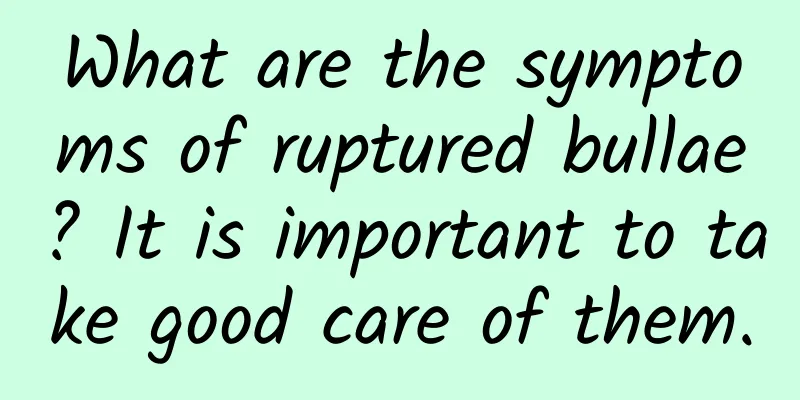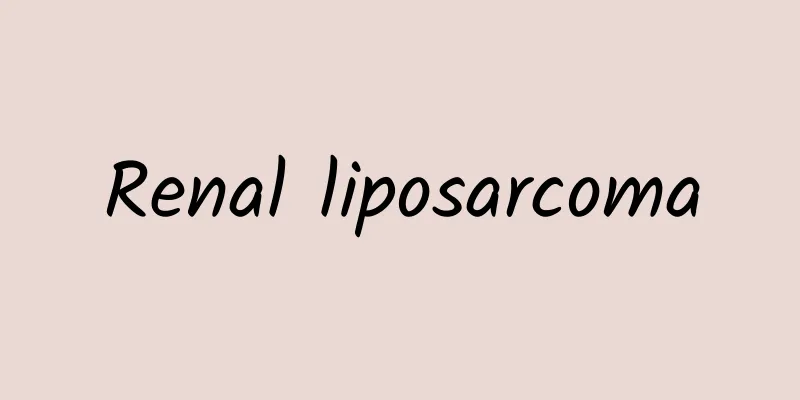What are the symptoms of ruptured bullae? It is important to take good care of them.

|
Many times, bullae are asymptomatic. If the patient exerts excessive force, such as severe coughing, high-intensity exercise, lifting heavy objects, etc., the bullae will rupture. Once the bullae rupture, it will cause symptoms of difficulty breathing and palpitations. 1. What are the symptoms of bulla rupture? Bullae may not have any symptoms. When the pressure increases suddenly when exerting force, such as coughing violently, lifting heavy objects or doing sports, the bulla ruptures and the gas enters the pleural cavity from the lungs, forming a spontaneous pneumothorax. Breathing difficulties, shortness of breath, palpitations, and a rapid pulse may occur. Pneumothorax eliminates the negative pressure in the pleural cavity and the gas compresses the lung tissue causing it to collapse toward the hilum. The degree of collapse depends on the amount of gas entering the chest cavity and the pathological condition of the original lesions of the lung and pleura. If the amount of gas entering the chest cavity is large and the original lesions of the lung tissue are mild and the compliance is good, the lung will collapse more, sometimes up to 90% of one side of the chest cavity. If the gas enters the chest cavity rapidly and the lung tissue shrinks rapidly, the symptoms will be severe and may even cause cyanosis. If the patient has emphysema, pulmonary fibrosis, long-term chronic infection of lung tissue and other diseases in addition to bullae, although some gas will enter the chest cavity when the bullae rupture and the degree of lung tissue collapse may be relatively mild, the symptoms will be more severe because the patient's original lung function has declined. X-rays can show a pneumothorax line formed by the compressed lung. If adhesions exist, the pneumothorax line will be irregular. After the bullae rupture, a small part of the cracks are smaller. After the lung tissue shrinks, the cracks close on their own, the air leakage stops, the air accumulated in the chest cavity is gradually absorbed, the negative pressure in the chest cavity is restored, and the lung re-expands and recovers. 2. During treatment, please pay attention to nursing and health care: 1. Patients should maintain a good attitude, avoid emotional tension, pessimism and negativity in life, and try to reduce stress reactions. 2. Patients should learn the correct method of expectoration, such as holding the breath after taking a deep breath, coughing gently several times, coughing the phlegm into the throat, pressing the chest at the same time, and finally coughing hard to cough out the phlegm. 3. In terms of diet, it is best for patients to eat more foods containing high-quality protein and vitamins, which can not only increase their own nutrition, but also effectively alleviate the condition. Patients should eat less irritating foods, drinks, etc. 4. Patients should drink more water in their daily lives, which can dilute the sputum and facilitate its discharge. |
>>: Comminuted fracture healing time, grasp the three stages of healing
Recommend
What causes nephritis in children? Have you discovered the early symptoms?
Nephritis is not only exclusive to adults, many c...
What to do if the elderly sprain their waist? Methods for treating lumbar sprain
I believe many people have experienced a sprained...
How to choose between white beeswax and chicken-fat yellow beeswax?
In life, people prefer to wear some accessories. ...
What to do about tinnitus
After a disease like tinnitus occurs, there are a...
Fetal movement above the belly button
Pregnant women will hear the sound of fetal movem...
The efficacy of licorice, angelica and astragalus
Many people who practice health care use Chinese ...
Emotional injuries should not be underestimated, as they can seriously damage many organs.
Emotions refer to a person’s inner mental activit...
The withdrawal bleeding stopped after a while.
Withdrawal bleeding will occur at different stage...
How to treat low-grade fatty liver
Low-grade fatty liver is also a relatively mild t...
Why do you get urticaria?
In daily life, we sometimes see that wheals are e...
Why do girls sweat on their palms?
Sweating palms of girls is a normal physiological...
What to do if your arms hurt from the sun
In some areas with strong ultraviolet rays, every...
Women will suffer from "dysfunctional uterine bleeding" during these two special periods
During adolescence and menopause, the body's ...
What is the reason for frequent urination in a 5-year-old child?
If a five-year-old child has frequent urination, ...
How to quickly remove nasal pustules?
After entering adolescence, people are prone to a...









